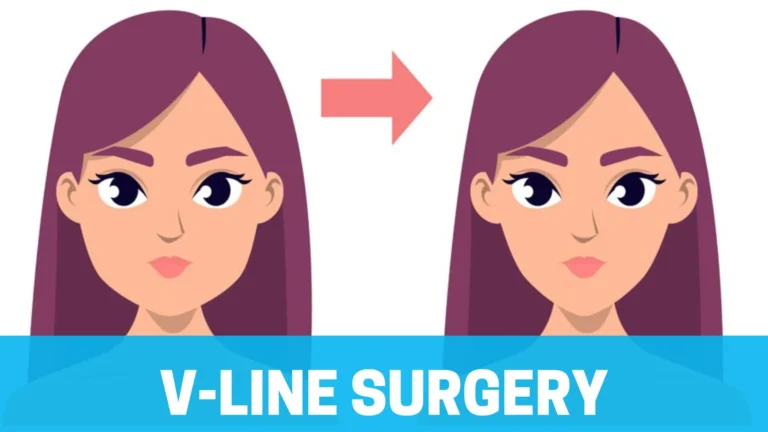V-Line Surgery is a revolutionary surgical procedure to help patients rid themselves of varicose veins without traditional surgery.
What is V-Line Surgery?
The goal of V-Line Surgery is to reshape the jawline. It is sometimes referred to as V-Line Jaw Surgery or Asian V-Line Surgery. In order to achieve a more aesthetically acceptable and streamlined “V” shape, this technique re-forms the angles of the chin, mandible, and jaw. In some cultures, femininity and female attractiveness are associated with a V-shaped jaw and chin. People who identify as women or non-binary and want a more “feminine” jaw and chin shape are typically the ones who are most interested in this treatment.
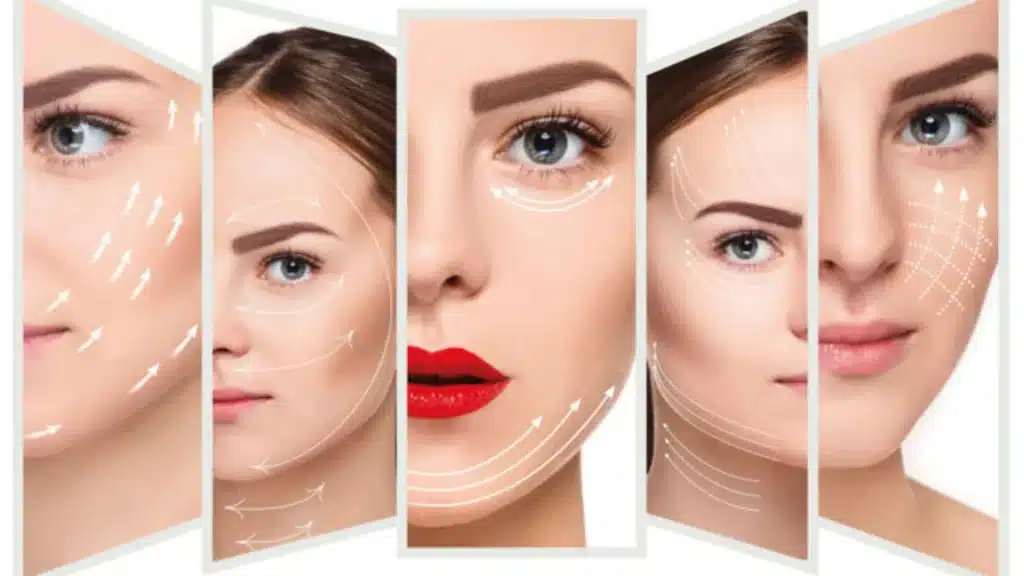
A nonsmoker with an active lifestyle who has no history of bleeding or autoimmune diseases is the best candidate for V-line jaw surgery. V-line jaw surgery does have some risks, as does every type of surgery.
What happens in V-Line Surgery?
In V-Line Surgery your jawline look narrower. Parts of your chin and jawbone are removed during surgery so that your jaw can recover with a more pointed shape that resembles the letter “V.”
Getting ready for V-line surgery
You may need to abstain from using blood-thinning drugs for up to 2 weeks before to your appointment if you plan to have a V-line procedure. If you smoke, you will be urged to give it up because it might hinder recovery and increase your risk of problems.
You won’t be allowed to drink alcohol for 48 hours prior to surgery, per your doctor’s instructions. You might receive extra instructions from your doctor prior to your consultation. Make sure to adhere to them strictly.
Targeted Areas
Surgery along the V-line addresses a very narrow region. Your jawbone and chin both get affected by the surgery. Incisions may be made there to help shape your jawbone, so it may also focus on the top of your neck.
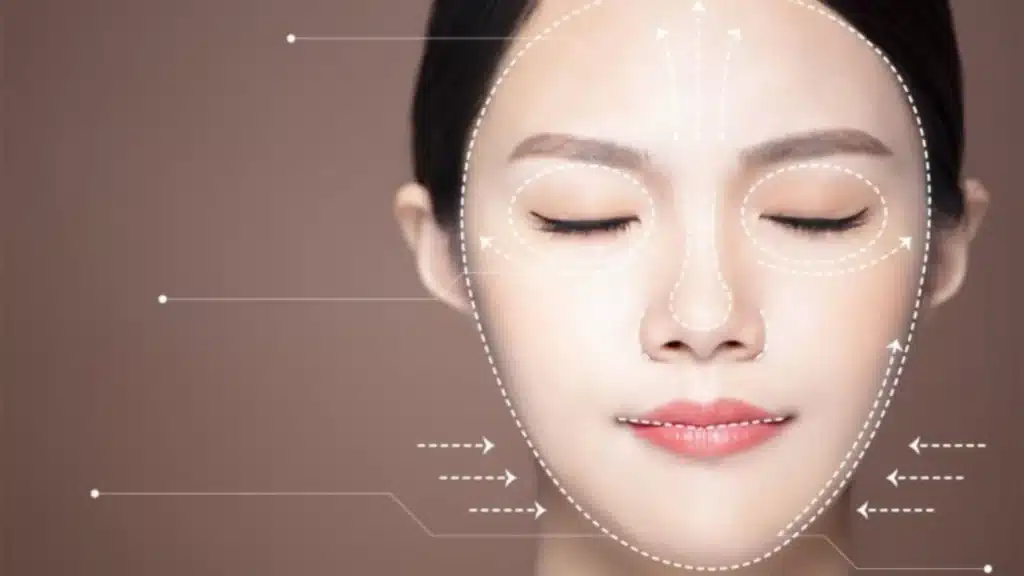
What is the minimum age for V-line surgery?
Surgery is typically appropriate for those in their 20s and 30s who have elastic skin and aren’t concerned about sagging.
Procedure for V-line surgery
Before surgery, just prior to surgery, the surgical locations may be confirmed by marking your face with a marker.
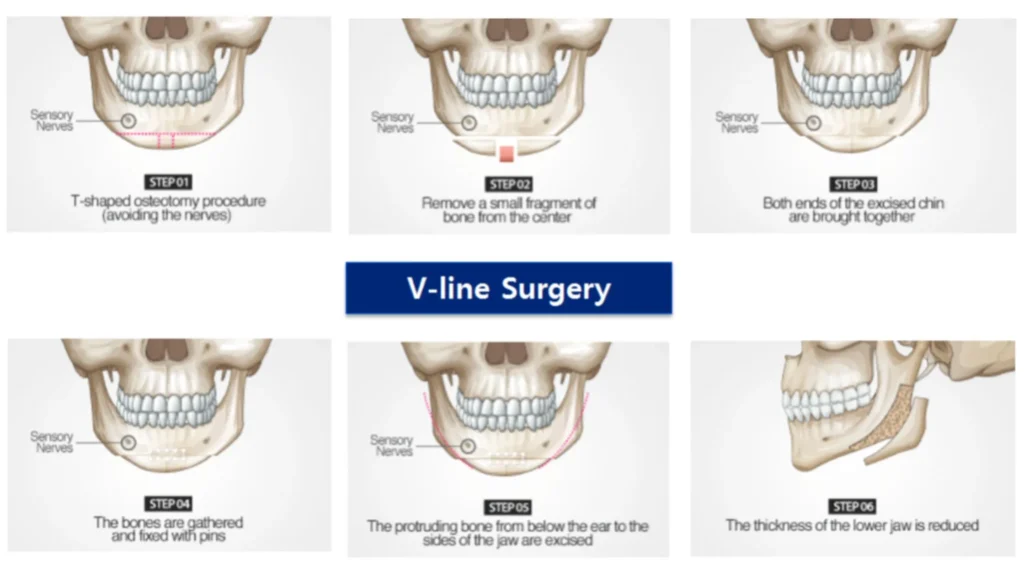
To ensure that you are pain-free during surgery, general anesthetic will be used. To begin the treatment, your surgeon will make incisions on your chin and along your jawline. Your mandible (jaw bone) will be reduced in size and your jaw will be positioned at a steeper angle. Your chin might be sharpened and shaved.
After that, your surgeon will close the incisions and apply bandages to your wounds. They could put in temporary drains to aid in your healing.
It will take one to two hours to finish this surgery.
You will be brought to a recovery room after the treatment to wake up while under anesthetic.
Before you may return home to finish your recuperation, you might need to spend at least one night being monitored in the hospital.
The procedure V-Line Surgery is ideal for those looking to:
- Reduce a broad jaw’s length and width.
- Reduce a thick, masculine chin and replace it with a more feminine curve to create a face with an oval “V” shape.
- Eliminate a double or additional chin.
- To make the jaw more slender and attractive, reduce its size and position.
What to expect after V-line surgery
You should anticipate experiencing swelling and bruising in the treated area right away; however, these side effects should go away within two weeks. You will be instructed to refrain from intense activities while you heal and adopt a brief soft food diet to avoid agitating the area.
To ensure proper healing of your incisions, you must wear a compression garment over your chin, jaw, and neck.
Aftercare
Fillers are administered with a syringe, leaving no scars and requiring little recovery time.
Because the tissue needs time to cling to the implant, surgical implants take longer to recover from than sliding genioplasty. Sutures placed within the mouth dissolve and don’t need to be taken out.
When you feel ready, you can start consuming a soft-food or liquid diet. After every meal, be careful to rinse with water or an antibacterial rinse.
Drink or Eat after V- Line Surgery
Food is difficult to chew right away after surgery. To prevent your jaw from getting sore throughout the healing process, you should consume soft liquid foods like porridge and rice. It is feasible to chew a variety of meals once jaw function has fully returned.
Risks and Negative Effects
| Most Common | Less chance |
| Swelling and Inflammation | fever |
| Pain and Bruising | nausea |
| Uneven Healing or Asymmetry of the Jaw | dizziness |
| Bleeding and Drainage | green, yellow, or black drainage from your wound |
| Headache General Anesthesia | —————– |
Before and After Result
Here are you see the visible result before and after V-Line Surgery.
Before After
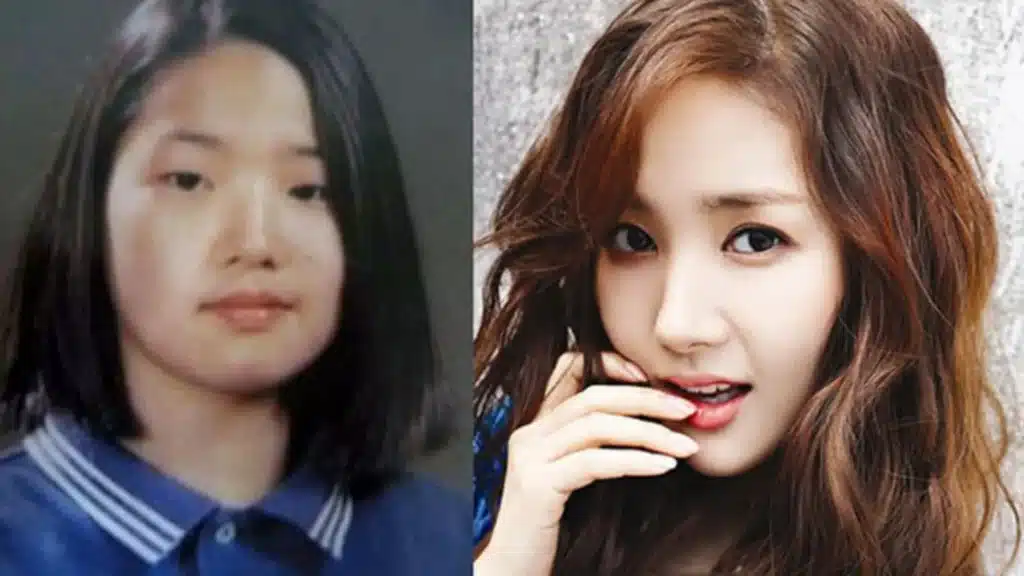
V-line surgery cost
Surgery on the V-line of the jaw is regarded as elective. In other words, health insurance does not provide any coverage for the related expenses. Surgery on the V-line of the jaw is regarded as elective. In other words, health insurance does not provide any coverage for the related expenses.
According to customer testimonials on RealSelf.com, the average cost of a V-line procedure in the United States is close to $10,000. Your precise out-of-pocket costs, however, could change depending on things like:
- The cost of living in your area
- Anesthesia
- your provider’s level of experience
- Based on the amount of experience of your provider
The cost of this procedure may also increase due to recovery time. During the first 7 to 10 days of recovery, you can resume most of your regular activities, including going back to work.
The V-line surgery is it permanent?
The outcomes of this cosmetic procedure are long-lasting. If once your recovery is complete you notice any facial asymmetry or don’t like the way your V-line face looks, you’ll need to have another treatment to make the necessary corrections.
Efficacy
- After healing, outcomes can vary.
- Some patients require a second “revision” procedure before they are satisfied with the results.
Safety
- This is a serious surgical procedure.
- Although there is a low chance of problems, other major side effects like infection can occasionally happen.
Convenience
- The technique for doing a V-line jaw surgery is not taught to every plastic surgeon.
- The success of this procedure depends on choosing a qualified provider.
How to find a provider
Finding a qualified and board-certified provider in your area is the first step if you’re ready to learn whether V-line surgery is a good choice for you.
Use the search engine on the website of the American Society of Plastic Surgeons to get started.
V-line surgery specialist
- Peter Lee, MD, FACS
- Donald B. Yoo, MD, FACS
- Leif Rogers, MD, FACS (license on probation)
- John Frederick, MD
- Gary S. Takowsky, MD
- Som Kohanzadeh, MD
- Paul Mittermiller, MD
Note: V-Line Surgery tries to reshape the lower jaw’s features to give it a more attractive appearance. If you don’t like the way your chin appears or if you think your jaw’s square shape makes you look too masculine, it can be an excellent remedy.
